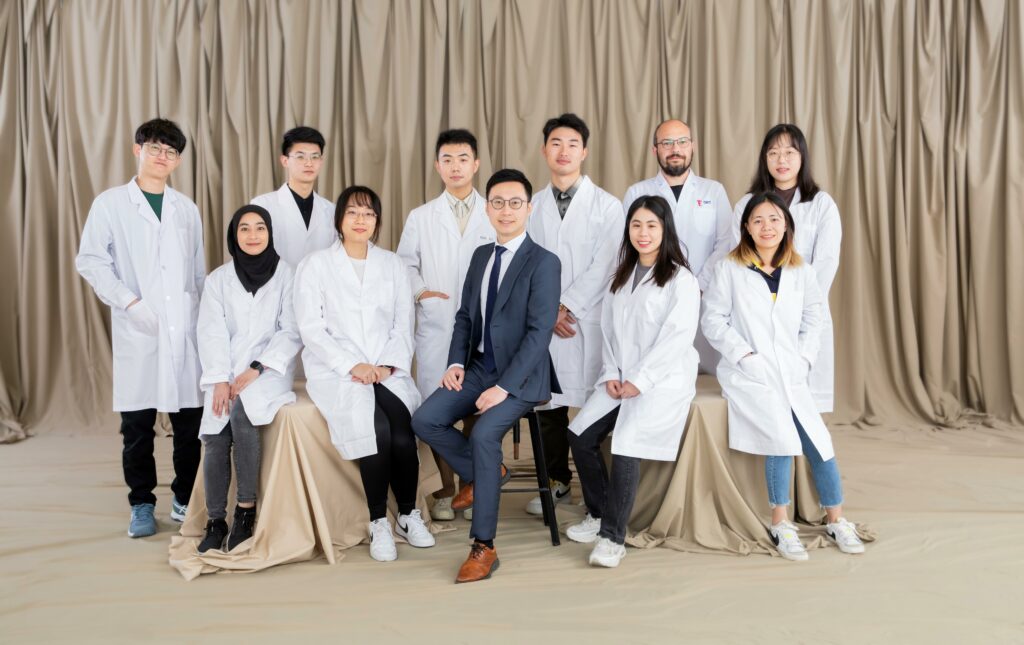CUHK
News Centre
CUHK discovers groundbreaking method for precise regulation of human proteins
Paving the way for the development of new drugs for numerous diseases
- Sugar modifies human proteins to sustain their normal functions through a process called glycosylation
- Failures of regulation of glycosylation modification on specific proteins can lead to numerous chronic diseases
- The CUHK team successfully invented unprecedented, patented small chemical molecules for glycosylation of targeted proteins
A research team led by Professor Billy Ng Wai-lung, Assistant Professor in the School of Pharmacy at The Chinese University of Hong Kong (CUHK)’s Faculty of Medicine (CU Medicine), who is also an investigator at the CUHK Li Ka Shing Institute of Health Sciences, has designed a novel class of small molecules named O-GlcNAcylation Targeting Chimeras (OGTACs), offering a pioneering method for precisely manipulating protein function in living cells, with the potential to revolutionise the treatment of a range of chronic diseases. This innovative technology underscores the versatility of chemical intervention in regulating cellular functions and provides the scientific community with a crucial research tool that had been lacking. Study details have been published in the prestigious international Journal of the American Chemical Society.
Research findings address a long-standing challenge in glycobiology
Sugar not only provides humans with calories and a satisfying taste but also regulates protein functions to guard their health. Glycosylation, induced by glycosyltransferases in human bodies, is a cellular process that modifies proteins through the addition of sugar molecules, which is crucial for regulating cells’ biological functions. O-GlcNAcylation occurs in more than 5,000 types of human protein and is regarded as a significant glycosylation modification, yet it is modified by just one single enzyme, O-GlcNAc transferase.
As the modification is only controlled by a single enzyme, failures in the process are common. This can lead to deregulation of protein functions and even the progression of numerous diseases, including cancer, diabetes and neurodegenerative disorders. Moreover, it is notoriously difficult to manipulate and study the O-GlcNAcylation process in a protein-specific manner. Scientists have developed various small-molecule chemical tools targeting the relevant enzyme. However, they tend to alter the glycosylation modifications of all proteins within the cell, leading to unavoidable side effects. The lack of precise chemical tools has made it challenging for researchers to study the O-GlcNAcylation function of specific proteins.
To address this long-standing challenge, Professor Ng’s team developed OGTAC technology. This newly developed class of molecules enables researchers to target specific proteins within living cells, controlling when and to what extent these proteins are modified. This level of precision allows detailed study of diseases at the molecular level and opens up a new druggable target: protein O-GlcNAcylation. For example, in Alzheimer’s disease, using conventional tools to increase the O-GlcNAcylation of Tau protein in mice models can reduce the aggregation of this protein, thereby avoiding neuronal cell death. However, this approach has inevitable side effects. It is anticipated that after intensive research, a newly invented OGTAC that specifically induces Tau O-GlcNAcylation will hit the market as a novel drug for neurodegenerative diseases.
Further studies to enrich OGTAC library for application in numerous human diseases
Professor Ng stated, “Traditional chemical tools inevitably interfere with global sugar homeostasis, hindering the dissection of functions of protein-specific O-GlcNAcylation in human diseases. I am tremendously grateful to our team, especially to my PhD students Mr Bowen Ma and Miss Khadija Shahed Khan, for their unwavering dedications in this invention. Now, our small molecules can unprecedentedly enrich the toolkit of researchers, arming them to uncover the impacts of protein O-GlcNAcylation on human diseases.”
Professor Ng is confident that this research paves the way not only for precise regulation of protein functions but also for the development of new drugs for a range of diseases. He added, “My team is committed to creating a more diverse OGTAC library and testing the OGTACs in numerous disease areas. Through screening of OGTAC libraries against disease models and further optimisation to enhance their potency, our ultimate goal is to translate them into novel drug candidates for a range of human diseases.”
For more detailed information, please refer to the full study:
https://pubs.acs.org/doi/epdf/10.1021/jacs.3c14380



